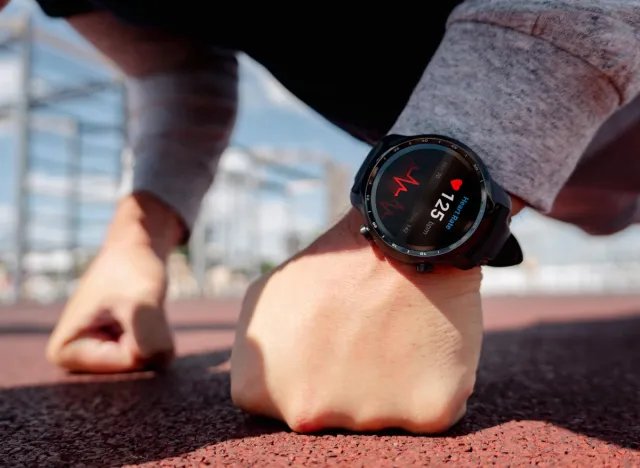Over my decade of coaching and training, heart rate is one of the most overlooked factors in weight loss. While most people focus on adjusting their diet or trying the latest workout trend, I’ve found that understanding and tracking heart rate can make a significant difference in achieving results. Once I started incorporating heart rate measurements into their routines, many clients experienced more efficient fat loss and more significant overall progress. By targeting the right heart rate zones, I could fine-tune their workouts for maximum impact.
In my experience, the most optimal heart rate zone varies from person to person, and heart rate variability (HRV) plays a significant role. I’ve used HRV to assess recovery and stress levels, which allows us to customize training intensity.
When clients have high HRV, we can push harder and optimize fat-burning zones during workouts. On days when HRV shows they’re under stress or fatigued, we dial back, ensuring their bodies are burning fat without pushing into overtraining or injury risk. This tailored approach has been a game changer.
In this article, I’ll share insights from my years of using heart rate monitoring to help clients achieve sustainable weight loss. We’ll explore how to calculate your ideal fat-burning heart rate, why it matters, and how to use it effectively in your workouts.
If you’re ready to take your training to the next level and target fat loss more efficiently, read on!
Understanding Your Heart Rate and Its Role in Weight Loss

Your heart rate is the number of times your heart beats per minute (BPM), significantly affecting how your body uses energy during exercise. Different heart rate zones target various energy systems, and when it comes to fat loss, you want to be in a zone where your body uses fat as its primary fuel source.
To break it down, when you exercise at a lower intensity, your body relies more on fat for fuel. At higher intensities, your body shifts to burning more carbohydrates.
But here’s the kicker—while higher-intensity workouts burn more calories overall, lower-intensity workouts (in your fat-burning zone) burn a higher percentage of calories from fat. By working out in this zone, you can tap into your body’s fat stores, which is crucial for long-term weight loss.
This is where knowing your heart rate comes in handy. If you train too hard, you may burn more carbs than fat. If you take it too easy, you might not burn enough calories overall. Finding that sweet spot—your ideal fat-burning heart rate—helps you maximize fat loss efficiently.
How To Calculate Your Fat-Burning Heart Rate
Finding your ideal fat-burning heart rate isn’t as complicated as it sounds. There’s a simple formula you can use to estimate the optimal range. First, you need to calculate your maximum heart rate (MHR), the highest number of beats your heart can safely handle during intense exercise.
To get your MHR, subtract your age from 220. For example, if you’re 40, your max heart rate would be 180 beats per minute (220 – 40 = 180). The fat-burning zone is generally considered 60% to 70% of your max heart rate. So, if your MHR is 180, your fat-burning zone would be between 108 and 126 BPM.
While this formula provides a good starting point, remember that everyone’s body is different. Some people may burn fat more efficiently at slightly higher or lower intensities, so it’s essential to listen to your body and make adjustments based on how you feel during workouts.
REALTED: 8 Ways To Boost Your Metabolism & Burn Fat Naturally
Using Your Fat-Burning Heart Rate for Maximum Weight Loss


Now that you know your fat-burning heart rate, how do you use it to lose weight? The key is incorporating exercises that keep your heart rate in this target zone for extended periods. Steady-state cardio, like brisk walking, cycling, or swimming at a moderate pace, are all excellent ways to stay within your fat-burning range.
Aim for 30 to 60 minutes of moderate-intensity exercise, where your heart rate stays between 60% and 70% of your max heart rate. This ensures your body uses fat as fuel without burning out or overtraining. Combine this with strength training to build muscle, increasing your overall metabolism and helping you burn more calories even at rest.
It’s also essential to remember that fat loss isn’t just about spending hours in the gym. Consistency is key. Regular exercise in your fat-burning zone, combined with a balanced diet, will yield sustainable results over time.
Balancing Fat-Burning with High-Intensity Workouts
While staying in the fat-burning zone is effective, don’t overlook the power of mixing in higher-intensity workouts. High-intensity interval training (HIIT) or sprint intervals push your heart rate into higher zones, which burns more calories in a shorter time and can improve cardiovascular health.
When you combine HIIT with fat-burning zone workouts, you hit the sweet spot for calorie-burning and fat loss. HIIT creates an “afterburn” effect, meaning you continue to burn calories even after your workout. This, paired with the fat-burning zone, can help you achieve a well-rounded weight-loss strategy.
So, while targeting your fat-burning heart rate is great, don’t be afraid to ramp up the intensity occasionally. It’s all about balance and variety.
Monitoring Your Heart Rate for Optimal Results


With today’s technology, tracking your heart rate during workouts is easier than ever. Fitness trackers and smartwatches can monitor your heart rate in real time, allowing you to stay in your target zone without constantly checking the clock.
These tools can be handy for beginners and experienced athletes alike. They help you stay accountable and ensure your workouts are as efficient as possible. You’ll also be able to track trends in your heart rate over time, which can show improvements in your fitness and how your body is adapting to your workout routine.
Even without a tracker, you can gauge your effort by how you feel. If you can talk comfortably but still feel slightly out of breath, you’re likely in the right range for fat-burning. Adjust accordingly as your fitness level improves.
Consistency Is Key to Success
Finally, the most critical factor in any weight-loss journey is consistency. Finding your ideal fat-burning heart rate is just one piece of the puzzle. To lose weight effectively, you must pair your workouts with a healthy diet, adequate sleep, and stress management.
Consistency over time will lead to sustainable weight loss. Stick to a routine, challenge yourself, and listen to your body. Remember, there’s no one-size-fits-all approach to fat loss, but understanding your heart rate is a powerful tool to help guide your efforts.


